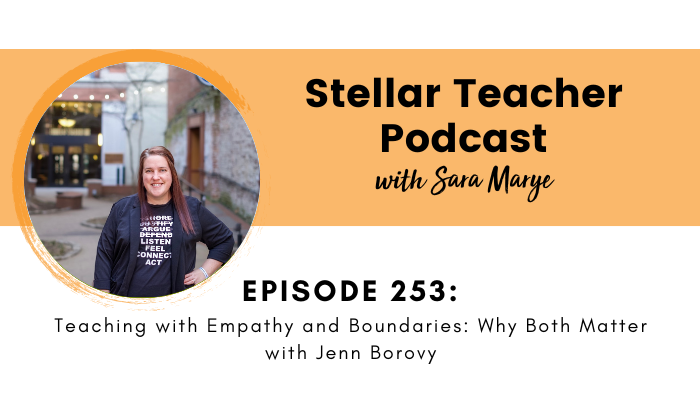
Click play below to listen to the benefits of boundaries in maintaining teacher wellness.
If you’ve ever ended the school day completely drained—wondering how long you can keep this up or feeling guilty for needing a break—this episode is for you. I’m joined by trauma-informed consultant and former Teacher of the Year Jenn Borovy, founder of Ten10Coaching. Jenn is passionate about helping educators protect their energy, set clear boundaries, and build a teaching life that feels balanced and sustainable.
In our conversation, Jenn shares her personal story of hitting a breaking point and how it led her to completely rethink her approach to teaching and leadership. We talk about the emotional dual burden teachers often carry, how to be trauma-aware without stepping into the role of a therapist, and simple boundary-setting strategies that can help you keep doing the work you love—without losing yourself in the process.
Whether you’re feeling overwhelmed or simply trying to avoid burnout, Jenn offers a grounded, compassionate perspective that reminds us: you can be a great teacher and still have a life outside of school. This conversation is a powerful reminder that setting boundaries isn’t selfish—it’s essential for longevity in this work. You’ll walk away with practical steps and a renewed sense of permission to protect your energy and your joy.
Meet Jenn
Jenn Borovy
Jenn Borovy is a former Teacher of the Year turned trauma-informed consultant, speaker, and founder of Ten10Coaching-a space where educators and nonprofit professionals get the support they need to keep doing meaningful work without burning out. After more than a decade in public education-teaching and coaching in some of Knoxville’s most under-resourced schools-Jenn now partners with school districts and nonprofits across the country to help staff and volunteers manage secondary trauma, build sustainable life rhythms, and show up well for the communities they serve.
Jenn lives just outside of Knoxville, Tennessee with her husband and their three energetic boys. When she’s not working, she’s likely at one of her kids’ sports events or volunteering at church-and always encouraging people to cancel more plans and go home to eat dinner with their people.
In this episode on teacher wellness and setting boundaries, we share:
- The emotional weight behind teacher burnout—and how to recognize when you’re carrying too much
- Jenn’s personal journey from burnout to building a more balanced life through boundaries
- Why setting boundaries isn’t selfish, but essential for long-term teacher wellness
- The difference between caring for your students and carrying their emotional burdens
- How to be trauma-aware without stepping into the role of a therapist
- Practical boundary-setting strategies that help prevent teacher burnout and protect your peace
- The signs that you might be approaching burnout (and what to do about it)
- Encouragement and mindset shifts that empower teachers to find balance between work and life
- Why boundaries are essential for maintaining your energy and avoiding emotional overload
- Realistic steps teachers can take to make teaching a sustainable, long-term career
Resources:
- Join The Stellar Literacy Collective
- Sign up for my Private Podcast: Confident Writer Systems Series
- Sign up for my FREE Revision Made Easy email series
- If you’re enjoying this podcast, please leave a review on Apple Podcasts!
Related episodes and blog posts:
- Episode 242, Dear Stellar Teacher: How can I take personal days without feeling guilty or overwhelmed?
- Episode 238, Dear Stellar Teacher, How Can I Reach My Goals Without Feeling Overwhelmed?
- Episode 72, 4 Things to Consider if You’re Thinking About Making a Career Change
Connect with me:
- Join my newsletter
- Shop my TPT store here
- Subscribe to our YouTube channel
- Instagram: @thestellarteachercompany
- Facebook: The Stellar Teacher Company
More About Stellar Teacher Podcast:
Welcome to the Stellar Teacher Podcast! We believe teaching literacy is a skill. It takes a lot of time, practice, and effort to be good at it. This podcast will show you how to level up your literacy instruction and make a massive impact on your students, all while having a little fun!
Your host, Sara Marye, is a literacy specialist passionate about helping elementary teachers around the world pass on their love of reading to their students. She has over a decade of experience working as a classroom teacher and school administrator. Sara has made it her mission to create high-quality, no-fluff resources and lesson ideas that are both meaningful and engaging for young readers.
Each week, Sara and her guests will share their knowledge, tips, and tricks so that you can feel confident in your ability to transform your students into life-long readers.
Tune in on your favorite podcast platform: Apple, Google, Amazon, Spotify, Castbox, and more! If you’re loving this podcast, please rate, review, and follow!
Podcast (stellar-teacher-podcast): Play in new window | Download
Sara
Hey, teacher friends! Welcome back to the podcast. Now, if you’ve ever found yourself completely drained at the end of the school day—questioning how long you can actually sustain this work, or feeling guilty for caring so much but still needing a break—then this episode is for you.
Today, I’m joined by educator and coach Jenn Brever, founder of 10:10 Coaching. Jenn’s work centers on helping teachers and schools create healthier, more sustainable approaches to education by teaching with both empathy and boundaries.
In our conversation today, we talk about why so many teachers feel like they’re carrying an emotional dual burden, what it means to be trauma-aware without becoming your students’ therapist, and practical boundary-setting strategies that can help you keep doing the work you love—without losing yourself in the process. Jenn shares her own story of hitting a breaking point and how that turning point really helped her completely rethink how she approached teaching and leadership. This episode is filled with honesty, encouragement, and real-life advice. Let’s get to it.
Hi Jenn, thank you so much for joining me on the podcast today.
Jenn
Yeah, of course! I’m glad to be here.
Sara
So I am super excited about the topic we’re talking about, which I know is encouraging teachers to teach with both empathy and boundaries. I was a teacher who really struggled with teaching with boundaries, and I know this is kind of an area that you really focus on. Was there a specific moment or experience in your teaching career that led you to this specific focus?
Jenn
Yeah, sure, absolutely. I was in public education for almost 13 years, and I was definitely the teacher who was saying yes to everything. During those 13 years, I also had three kids, and I was still saying yes to all of the school stuff while trying to be a mom and be a wife. And none of that was working out very well for anybody—except for the people at the schools I worked at. They didn’t know that I was dropping the ball everywhere else. I put up a really good front. Everything seemed to be fine.
And honestly, it wasn’t until I was named Teacher of the Year in 2020 when I realized there was a real issue. I was handed this shiny little glass trophy, per se, that said, “You’re such a great teacher. Good job.” But I knew that on the inside, I was a mess, and that my kids weren’t getting the best of me. My husband wasn’t getting the best of me. Something had to shift.
I actually didn’t even go to the announcement ceremony for Teacher of the Year at school. I went home and said I was sick. One, because I didn’t like the attention—but two, because I just had this deep dissonance within me. I was like, “This is not okay. I refuse to be celebrated for this.” That was really the turning point for me.
And then schools closed because of COVID right after that, and I had this natural opportunity to realign, to reset, and to figure out what was really important. So yeah, I had a long history of no boundaries and doing too much, but that pivot moment in 2020 was really what changed the game.
Sara
Yeah, I was going to say that sounds like a very pivotal moment. But I think, hearing you talk about your experience, so many teachers can relate to that. I know I was that teacher. I was like, “Yes, I’ll be grade level chair. Yes, I’ll help out with the parent night. Yes, I’ll do Saturday tutorials.” I didn’t know how to say no at school.
And my husband and I don’t have any kids, and I’m always like, “How do teachers with kids do it?” Because I felt like I was struggling to be a teacher and a wife and a friend—and I didn’t even have the mom aspect, which I’m sure brings in a whole other layer of responsibility and not having time for yourself.
So I definitely think a lot of teachers can resonate with your experience. And of course, I’m excited as we continue talking through this episode, because I know you have a lot of new perspectives to share—ones I think teachers can really benefit from.
So I know you’ve described teaching right now, sort of in this post-COVID era, as a “dual burden.” Can you kind of unpack what that means and why you think the emotional toll teachers are feeling feels even heavier now than it has in the past?
Jenn
Yeah. So I think if we didn’t just mention the insanity that is our country these days, we’d be lying to ourselves. And that’s a huge part of it. Education is shifting every single day. Resources are decreasing while expectations seem to be almost increasing. There’s just a misalignment there—and that’s just the professional side of the career.
Then you have everyone’s personal stuff and how it’s connected to that. Just having families and the regular things that life throws at you. But then you’re also carrying what your students are experiencing—whatever that may be—depending on your school community and things like that. So teachers definitely feel the tension of being pulled in so many different directions, and that’s just a lot. That’s a lot to carry.
Sara
Yeah. What are some signs that a teacher might—because sometimes I think it’s one of those things… Like, I definitely experienced burnout as a teacher, but I didn’t realize I was experiencing it until I was out of it and years later. And I think sometimes when you’re in that sort of intense season, it’s hard to know—is this just a hard season, or am I really being expected to carry too much? So what are some signs that a teacher might be carrying more than they realize, whether it’s emotionally or mentally?
Jenn
I think the number one indicator is just: you have nothing left in the tank at the end of the day, once you leave the school building—whenever that is.
Sara
Wait, that’s not a normal part of teaching? Is that what you’re saying?
Jenn
It’s absolutely not a normal part of teaching. No, no, it’s not. And in a lot of the conversations I’m having these days, the topic we’re talking about is: you have to make sure that you have something. You don’t have to have a full tank when you leave school, but you have to have something in order to give to the other parts of your life—whether that’s your children, your spouse, your friends, your family, your hobbies. Teachers need to have hobbies. We are more than just teachers. We are actually whole people who have other things going on.
So you have to have some sort of capacity to live the rest of your life when you leave the school building. If you’re staying at school until 5, 6, 7, 8 o’clock, then going home and just crashing because you’re so depleted—and waking up and doing it again—I think that’s a huge indicator.
Other signs might just be simple tasks that used to be manageable—you’re now dreading them. They’re no longer manageable. You may be more irritable. You know, just things are different. And we can talk more about that as this conversation goes on.
Sara
Yeah, and I think just hearing you say that—I know so many teachers give everything they have to their classroom and their students. And I think just taking a step back and realizing, “Wait, do I have anything left for me?” And if not, then maybe it’s time that I put up some boundaries in some capacity.
You know, boundaries can take a lot of different forms, but yeah, if there’s nothing left, that’s a clear sign that there should be something left for you.
I know something that you talk a lot about is how this is important in terms of looking at student behavior—this idea of trauma in the classroom. And I know there’s a lot of conversation around being a trauma-informed educator. If teachers have not gone through formal training in trauma-informed practices, how can they start to recognize ways that trauma shows up in student behavior and understand the impact that might be having on their teaching expectations?
Jenn
Yeah. I think a huge starting point is just approaching everything with curiosity as the teacher, instead of assumption or correction.
Sara
Yeah, I think that’s great. Just approaching anything with curiosity versus judgment is a great sort of mindset to have.
Jenn
Yeah. And just asking—like, instead of asking yourself, “What is wrong with this kid in my class? Why won’t he stop doing X, Y, and Z?”—maybe say to yourself, “Maybe something has happened. What has happened to this kid? What do I not know that could be causing these behaviors?”
Whatever the behaviors may be. And I feel like in this conversation, we so often talk about the extreme behaviors—like the fighting or the aggression or the yelling out—but we also tend not to talk about the opposite end of the spectrum. The kids who are quiet and well-behaved, or whatever that looks like for you. Those are things to keep in mind, too.
Just come at it with a lens of curiosity and support, and be willing to be flexible with your classroom procedures and expectations. Be willing to change those to meet the needs of the kids in your class from year to year. I think that’s huge.
Sara
So can you talk a little bit about what it means for a teacher to be trauma-aware without stepping into the role of a therapist? Because I think a lot of times, teachers are expected to do more than just teach. And especially if they are understanding that students might have something else going on outside the classroom—how can they be trauma-aware without being the therapist?
Jenn
Yeah, I think it just means that you recognize that your kids are coming into class with other things happening in their lives too—just like you are. They’re smaller versions, you know, of adults. They’re little people, and they are experiencing real life just as much as we are as grown people. And I think if you just keep that in mind and have that be the lens that you look at your class through, I think that’s a huge part of being trauma-aware.
You don’t have to fix it. You don’t have to solve all the problems—that is not your responsibility. That’s where the boundaries come in. But you are supposed to be a caring, loving adult in their world for 180 days out of the year. And so, yes, you do have to be aware of their situations, but you don’t have to fix it. Offer the calm. Offer consistency. You can be empathetic, but it’s not your job to fix it. It’s not your job to hold the whole story.
Sara
And I think that can be so hard for teachers as well, because I know that teachers care so much, right? Like, they want to fix the problems their students are facing. And so I think having that boundary of, “I can be aware. I can create the calm. I can be loving. It’s not my job to fix it,”—I think that can be really hard for teachers to navigate.
Jenn
Yeah, for sure.
Sara
So let’s talk about maybe some of the things that teachers can do, right? We know we’re in this really difficult season in education, and a lot is being asked of teachers. What are some small mindset shifts or even language changes that can help teachers support their students without having to take on that full emotional responsibility of trying to be a therapist and fix everything?
Jenn
Yeah. I think one huge mindset shift is just being able to differentiate between caring for your students and carrying all of your students’ stories and all of their stuff. There’s a really great graphic that I show in some of our workshops that talks about having empathy with boundaries versus not having empathy with boundaries. It’s the difference between being a caring person and then carrying around other people’s stuff—and how one versus the other determines how much you’re able to support and show up for your kids in a healthy way.
Because you can show up and support your kids all you want—but without boundaries, that’s not healthy for anybody. And that’s not where real support happens. So I think that’s a huge one.
I think also just recognizing that it’s okay to use your words and communicate with kids on an age-appropriate level. Saying things like, “Oh, I’m so sorry. That was probably really hard for you. Thanks for trusting me with that story.” The end. You know? Recognize where your role stops. You’re not there to help process the feelings. We’re not licensed therapists. We’re teachers. That’s not our job.
Hopefully, there are people in your school who can provide that support if a child needs it—but just being really aware of yourself and where the line is.
Sara
Yeah, which I think is, again, so hard, because teachers are expected to do so much. It’s like they’re expected to be teachers and therapists, and sometimes parents and personal trainers—making sure their kids are getting enough movement, but without recess. So it’s like they’re asked to do so much.
I think it’s hard for teachers to be like, “Wait a minute, my role is to teach. I don’t need to take on all of these extra things.” I know that can definitely be difficult.
So what are some boundary-setting strategies that teachers can use that allow them to care deeply, but not… again, this whole thing you’ve talked about a couple of times—like, we’ve got to set up boundaries. So what are those boundaries teachers can set up? What are some strategies they can use to create boundaries in their life?
Jenn
So there are all kinds of different types of boundaries. Obviously, you know, there are time boundaries, digital boundaries, emotional boundaries, physical boundaries—all the things. But I think some big ones for educators are focusing on those time boundaries.
When are you going to be done working for the day? And what does it look like to be done with work for the day?
Sara
Okay, let’s talk about this one in depth, because I know there are going to be so many teachers, right, who are like, “Okay, but if I leave at 4 p.m. and I still have a stack of papers that need to be graded… I still have lessons that need to be planned… if I show up tomorrow, I don’t know what I’m doing.”
How do teachers navigate the “I want to leave at 4 p.m.” with “The responsibilities of my job feel like I can’t leave at 4 p.m.”?
Jenn
Yeah. So there are lots of layers to this conversation, right? Some of it comes down to time management, which I really struggled with when I was a teacher. When I had—not free time during the school day—but when I had some extra time where I could have been doing those things, I absolutely wanted to go and talk to my teacher friend instead. I really did. I needed the break—we all did—and we all did that.
But then I also paid for it later when I had work to do, which meant doing it after school, late at night, or not doing it until I got home after my kids went to bed—which meant I wasn’t getting sleep. So it’s recognizing that I have to make a choice: Am I choosing today to get this done now so I can leave early, or am I choosing today to go socialize because I may need that, actually—and I’ll have to do the work some other time? There’s not a perfect answer to this situation. I feel like it’s a daily choice based on what you actually need.
Which is a whole other podcast, probably, about different types of rest—and how there’s a thing called social rest—and how you need time with your people. That’s actually important. But back to boundaries: choosing those time boundaries—when are you done with work? And also your digital boundaries around work. Like, when are you going to stop looking at the school email on your phone from the couch? When are we going to stop doing that? When are we going to stop responding to the group chats, the group text message threads with all of our coworkers? That kind of stuff. Just little things, little shifts, can make a big difference on the front end.
And then some of those emotional boundaries: constantly telling yourself, This is not my problem to solve. This is not my problem to solve.
Sara
I mean, for sure teachers need to have time boundaries. But I didn’t even think about the idea of having a digital boundary. I never downloaded the school email app on my phone. I always encourage teachers—don’t do it unless your school gives you a phone. Just say, “No, I will not put that on my personal phone.” And I think that helped me when I was in the classroom.
But when you talked about the group text thread, right? I always had a text thread with our grade-level team and other teachers, which meant that at night, when I’m at home trying to reset for the next day, whatever school drama is going on—or the exhaustion—is still coming through. And of course, like you said, it’s my team—they were my people. But we needed to have a break from that. And there oftentimes was no break, even until summer. So it’s just realizing that having a digital boundary can really be beneficial for creating a sustainable career in teaching.
Jenn
I think it can be as simple as just silencing the notifications. You don’t have to tell everybody, “I don’t want to talk to you after a certain time.” You don’t have to say that if you don’t want to. Just silence the notifications—and then look at it in the morning. It’s going to be there.
Sara
For sure. And whatever the conversation is—that’ll still be there too. The drama, the situation—you know, it’s usually ongoing.
So I know you work with a lot of educators and really focus on supporting them in creating a sustainable career. What is one thing that you’ve really seen working well in schools or classrooms lately, especially when it comes to teacher well-being?
Jenn
I feel like the schools that are making the most progress in this area are the ones that have normalized having the conversations about teacher wellness. And not just teacher physical wellness—like your emotional health and your mental health.
The ones that are ready to face reality and have the conversations like, “Hey, this is hard. We see you. We know it’s not going well. What can we do? What do you need?” Obviously, within the parameters that are appropriate for the school and what they can control, because they can’t necessarily control everything. But they’re asking, “What’s actually going to be helpful?” And they’re following through with that.
They’re not waiting until somebody is crying in the hallway. They’re trying to build in these natural rhythms and routines in the structure of the school’s procedures that make the work more sustainable for their staff. They’re not waiting until there’s a crisis. They’re trying to meet the needs—not just as they arise—but proactively. They’re just very real about it, you know?
Sara
Yeah. Not trying to pretend like it’s normal or that teaching is easy. Like, “It’s no big deal.” Kudos to those schools, right?
So, any suggestions or advice for a teacher who’s thinking, Man, I wish my school was doing that? Because to me, that sounds like something that school leadership needs to decide to address and open conversations about. So if you’re a teacher and your school’s not talking about it, do you have any suggestions for how they could bring it up to their school leadership or be an advocate to start having more realistic conversations like this on their campus?
Jenn
Yeah, sure. So this is going to be twofold. I feel like most education systems in our country—if not all of them, then at least most—have had conversations about trauma at a basic level, and about ACEs and student behavior. I feel like that’s becoming super, super common. We’ve all kind of heard that conversation now for many years. I think an easy way to tie in what you and I are talking about is recognizing how all of that also applies to the adults in the building. That opens the door to have this conversation, because being a trauma-informed school isn’t just about the kids—it’s also about each other and the adults in the building. What it looks like to show up for your staff in a trauma-informed way can definitely lead into having these conversations. And bringing that kind of PD into the culture is a huge shift.
Sara
So if a teacher is listening right now and they’re on the edge of burnout, what’s one first step they can take to really start feeling more supported and grounded?
Jenn
Take a day off.
Sara
Yeah. And don’t worry about the sub plans or what’s being missed. Just take the day off.
Jenn
Yeah. I don’t know what else to say that isn’t fluffy or fake, right? Besides: take the day off. You’ve been given them for a reason, and it’s going to be okay. The show will go on. You know? And I never want to tell anyone to quit their job—that’s not why we started this business and this work. We’re not going to tell people to quit. But we are going to say things like, “Hey, you’re replaceable at your job, and you’re not replaceable at home.”
There will be another person who can teach in your classroom, but there will not be another version of you at home—for your spouse, your children, your family, or your friends. That’s just not how it works. And so if you are at a crossroads where you need to make a decision, that is also okay. It’s okay to say that you might need to make a change, and it’s also okay to say, “No, I’m going to stick with this, but I’m going to do it differently.”
Sara
Every teacher is obviously experiencing a unique situation, right? No two teachers are interpreting the current status of education the same way. But I know that teachers go into teaching because they want to make a difference—they love teaching. And I think so many teachers have felt almost a sense of grief over the last couple of years, like, “Wait a minute—I went into this career because I loved it, and now it’s different.”
And so I love even just that encouragement, or that perspective, that says: you can keep doing this, but we’re going to do it in a different way—one that doesn’t completely drain you. You can put in boundaries. There are conversations you can start having with your admin. It’s like, we can’t keep doing the same thing and expect different results—but there are things we can do differently if you want this to be a sustainable career for you.
Jenn
Yeah, absolutely.
Sara
So where can teachers connect with you or learn more about the work that you do?
Jenn
Yeah. The place I’m most active is Instagram. The handle is @Ten10coaching_ — that’s where all the business stuff happens, and where these conversations are taking place. You can also find more at the website: www.ten10coaching.com, or they can email me directly at [email protected] for a conversation as well.
Sara
Awesome. And we’ll link to all of that in the show notes. But Jen, thank you for the work that you’re doing to support teachers and schools and for helping to create a more sustainable educational system for both teachers and students. And thank you so much for coming on the show today.
Jenn
Yeah, of course. Thanks a bunch.


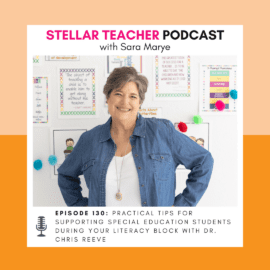
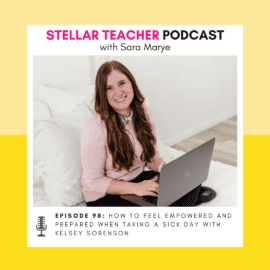
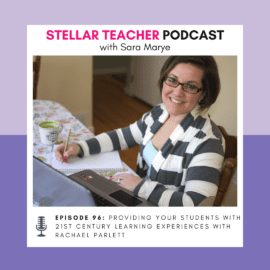
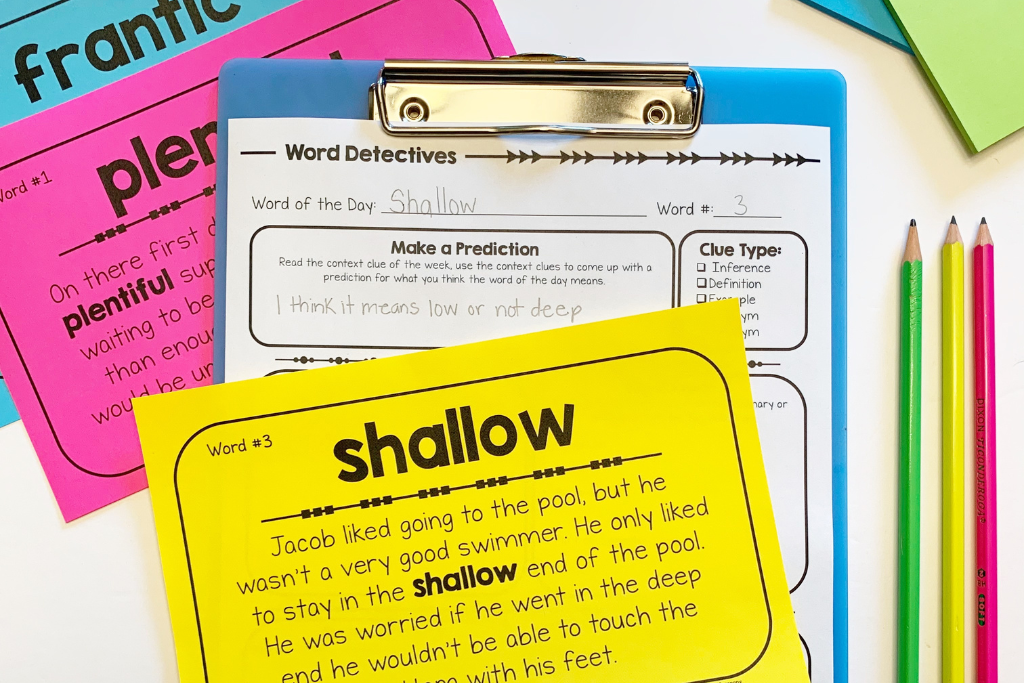
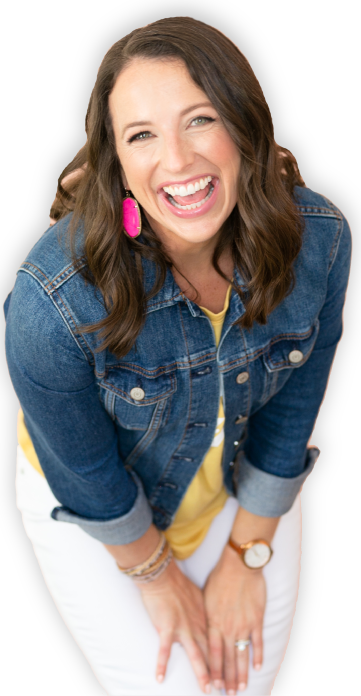
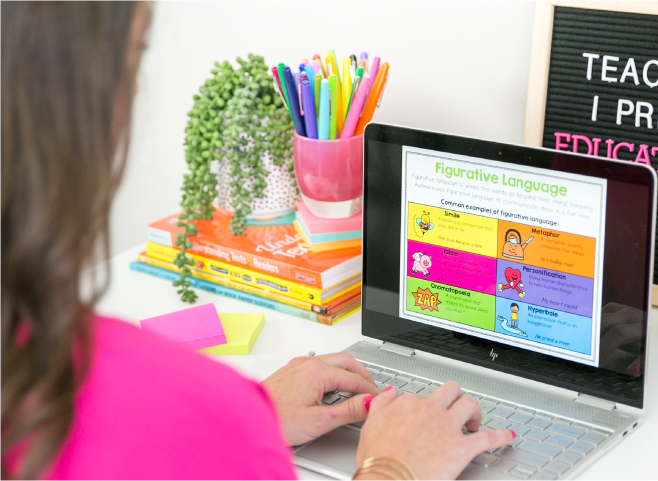
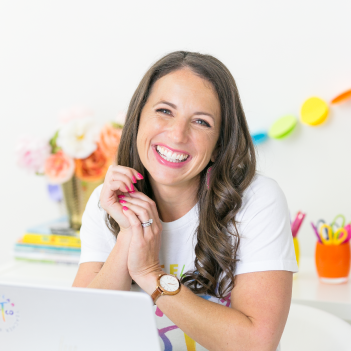
Leave a Comment
You must be logged in to post a comment.